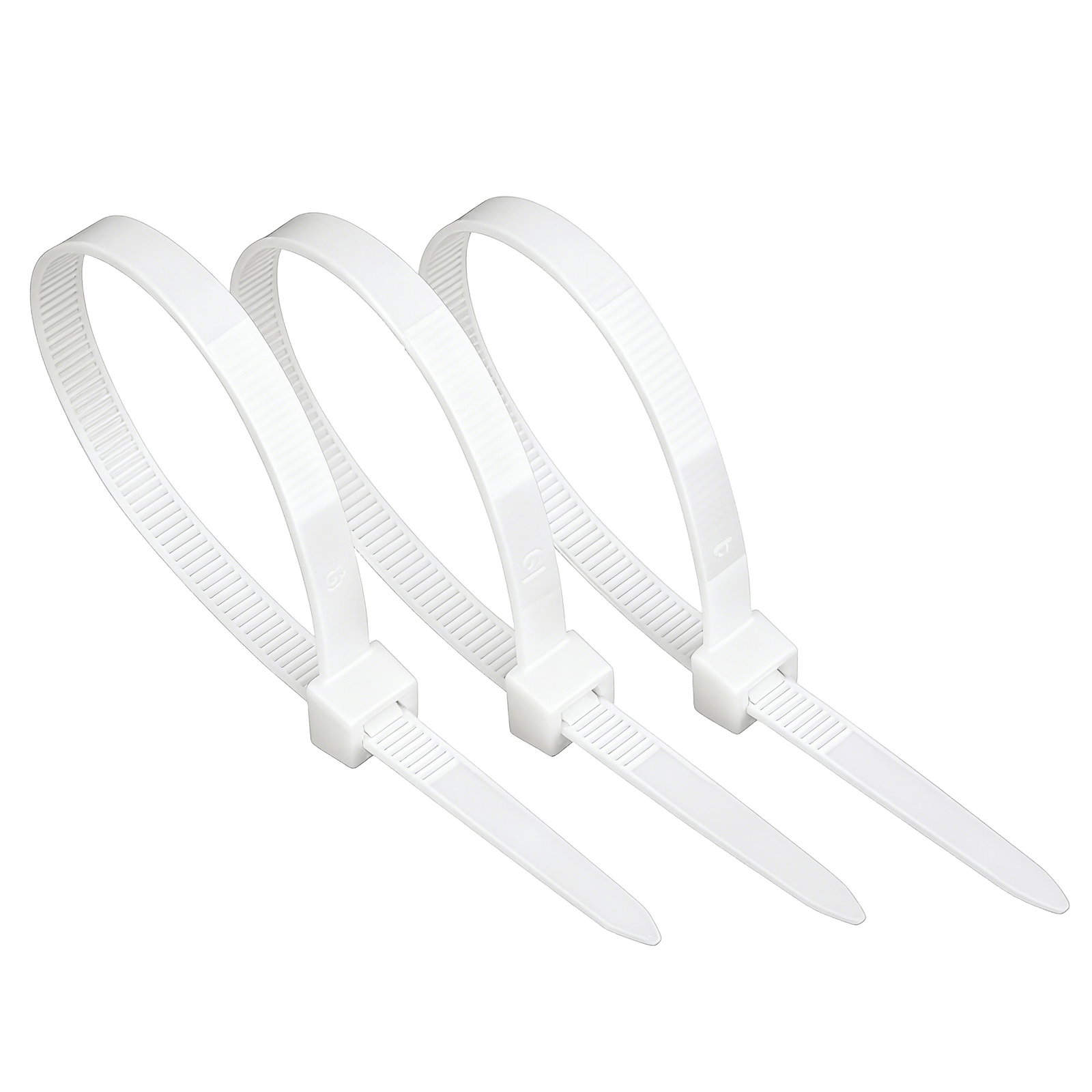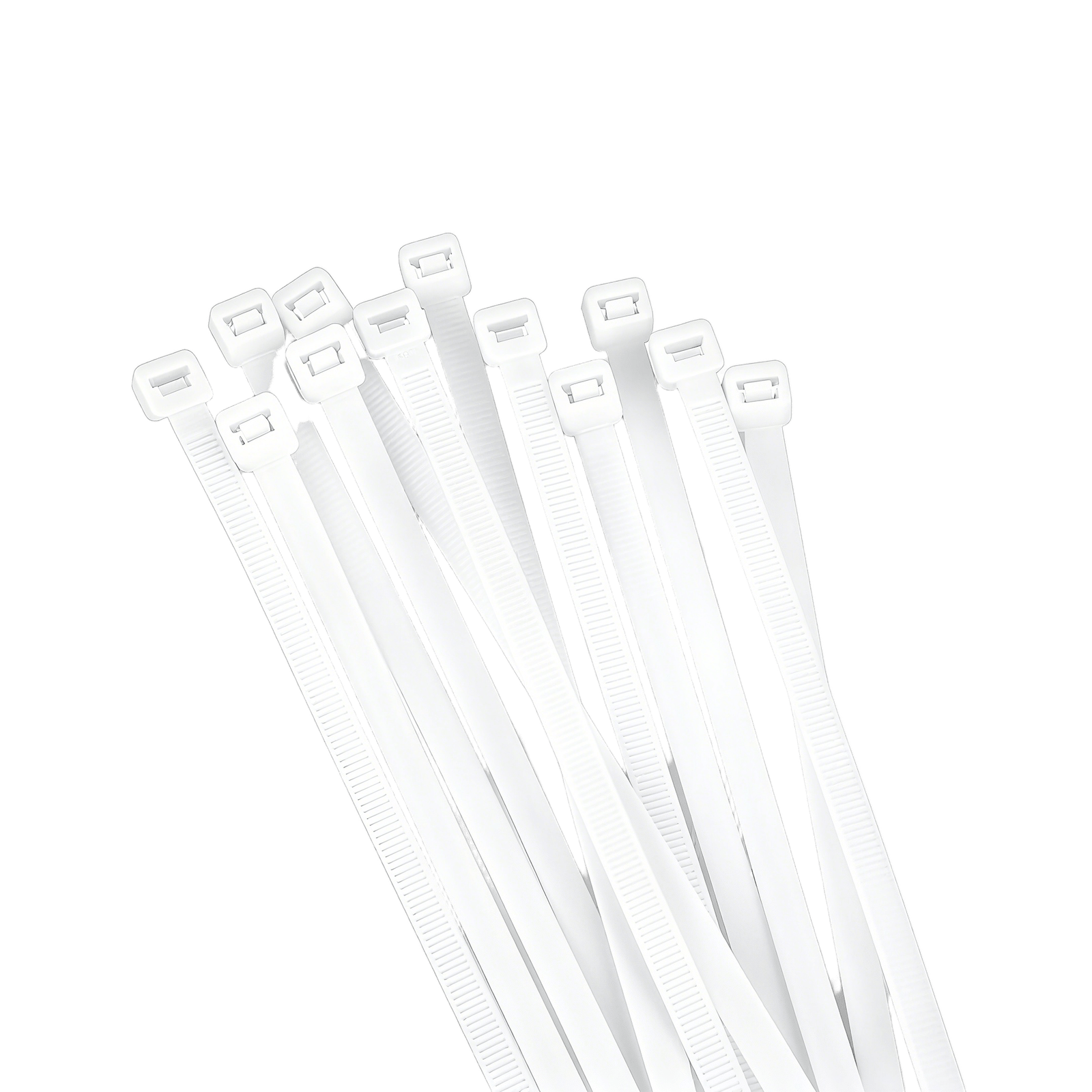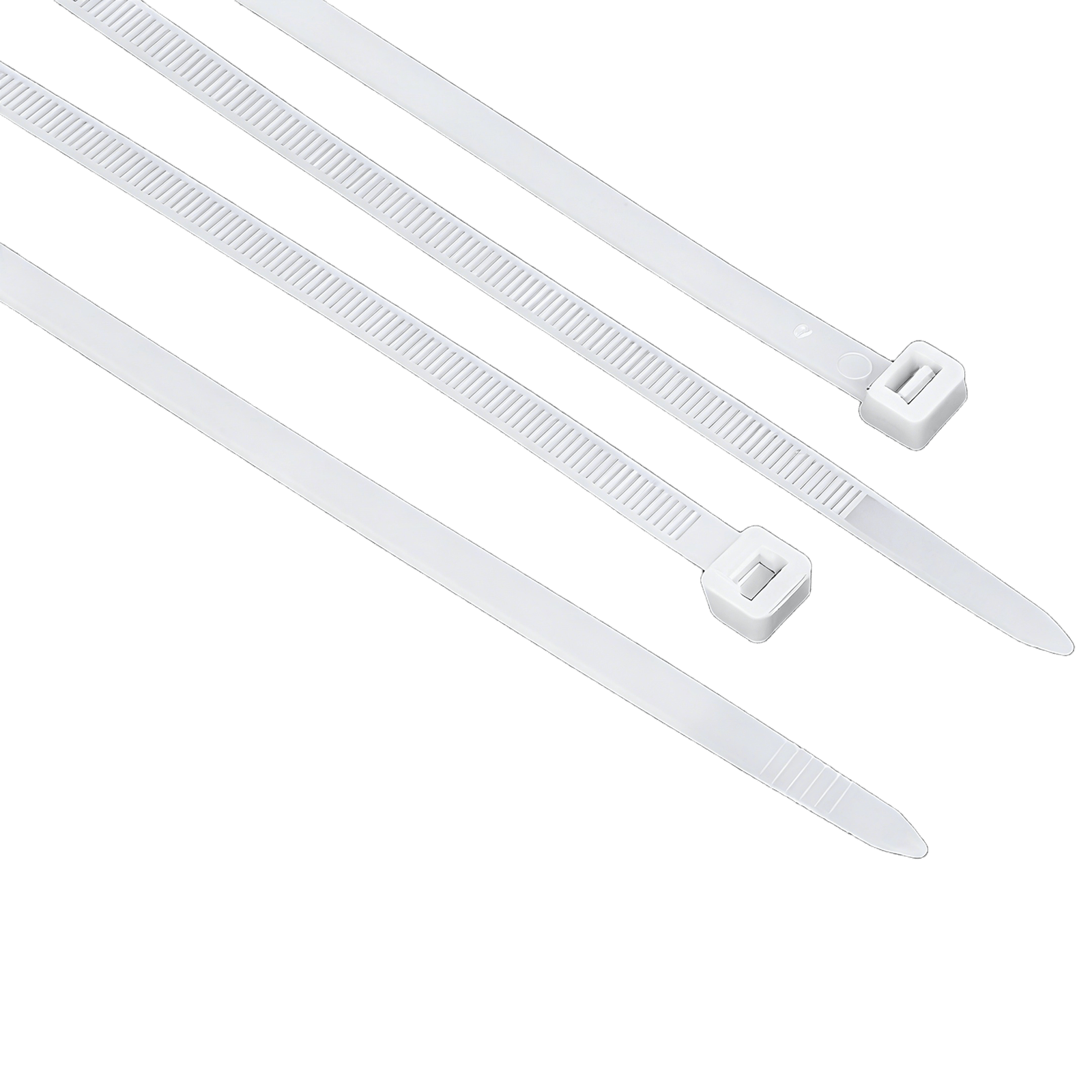1.What are Cold Weather Cable Ties
Cold Weather Cable Ties are high-performance cable ties specially designed for low-temperature environments. Made from low-temperature modified nylon 66 material, they can operate at temperatures as low as –40°C. These ties are widely used in applications such as cold chain transportation, outdoor firefighting equipment, cold storage facilities, and offshore platforms, ensuring secure fastening of cables, pipes, and equipment even under severe cold conditions. Whether for polar research or outdoor installations in winter, Cold Weather Cable Ties provide a reliable bundling solution and are the ideal choice for use in low-temperature environments.
2. How Low Temperature Affects Plastic Cable Ties
When ambient temperature falls below 0°C, ordinary nylon approaches its glass transition temperature (Tg), molecular motion is restricted, and the material becomes brittle. Low temperature reduces the mobility of polymer chains inside the plastic cable tie, with segmental motion nearly halted.
The free volume between molecules decreases and inter-chain friction increases. At the same time, secondary interactions such as hydrogen bonding become stronger, collectively causing the material to shift from ductile to rigid and lose toughness rapidly, ultimately manifesting as brittle fracture. These phenomena are especially notable in northern winters, cold storage, snowy fields, and offshore platforms.
3. Material Analysis — Low-Temperature Performance Comparison
Material Types
| Material Type | Advantages | Disadvantages | Recommended Minimum Use Temperature |
|---|---|---|---|
| Nylon 6 (PA6) | Low cost, widely available | Becomes seriously brittle below –10°C | –10°C |
| Nylon 66 (PA66) | Tighter molecular structure, better cold resistance | Slightly higher cost | –20°C |
| Low-temperature modified Nylon 66 | Contains special modifiers for cold resistance | Higher cost, more complex production process | –40°C |
| Stainless steel ties | Maintain strength and stability at extremely low temperatures | Lack flexibility and can scratch surfaces | –100°C |
Nylon66 modified cold weather cable ties are the core solution for severe cold environments. By adjusting the molecular structure and adding cold-resistant additives, the ties retain flexibility at temperatures as low as -40°C, effectively preventing brittle failure. The recommended minimum use temperature in the table refers to the dynamic minimum temperature for safe use — in plain terms, the temperature at which the tie can be bent back and forth without breaking.
4. How Manufacturing Process Affects Low-Temperature Performance
1. Injection molding temperature and cooling control
Improper injection temperature settings can affect the crystallization structure of nylon. Proper control of cooling speed helps form a more regular molecular chain arrangement, thereby improving the product’s low-temperature resistance and flexibility.
2. Raw material drying and moisture management
Nylon is hygroscopic; excessive moisture content can cause pores or embrittlement after molding. Strict control of drying process parameters can effectively reduce material defects and enhance impact toughness.
3. Mold structure and gate design
Uniform mold filling helps reduce internal stress and avoid stress cracking at low temperatures. The latch area should be optimized in runner design to improve its structural strength.
High-quality manufacturing processes can make a significant performance difference for cold weather cable ties made from the same base material. Therefore, when selecting products, consider not only material parameters but also the manufacturer’s process capability and quality assurance system.
5. Constant-Temperature Chamber Low-Temperature Test (Quality Verification)
To verify the cold resistance of the product, we conducted a comparative test in a –40°C constant-temperature chamber for 24 hours:
Conditions: Ambient temperature –40°C, duration 24 hours;
Samples: 10 ordinary nylon ties and 10 low-temperature nylon ties;
Results: Ordinary ties had an average breakage rate of 100%; Cold weather cable ties all remained intact and did not break after being bent back and forth 10 times.
The test results show that low-temperature modified nylon ties can maintain reliable mechanical properties in extreme cold and are well-suited for long-term outdoor use.
6. Typical Application Scenarios
Cold weather zip ties are widely used in facilities and equipment that operate under cold or extreme cold conditions, including:
Cold chain transportation and storage
In full-process low-temperature cold chain environments, zip ties cold weather ensure tidy and reliable cable routing, preventing device failure due to brittle breakage and safeguarding transport and storage security.
Cold storage equipment installation
Used to fasten cold room pipes, fans, and cables. They retain toughness under sustained low temperatures, resist vibration and thermal expansion/contraction, and ensure system stability.
Medical cold chain storage
Suitable for low-temperature storage of medical materials; they withstand refrigeration temperatures while remaining secure, ensuring cable fixation in sensitive areas and meeting industry safety standards.
Outdoor firefighting equipment
Exposed firefighting devices in harsh winters use their cold resistance to keep pipes and wiring secured, ensuring system responsiveness when emergencies occur.
Ships and offshore platforms
In alternating humid salt spray and low-temperature marine environments, Cold weather zip ties resist corrosion and freeze-cracking, providing durable and reliable cable fastening for onboard equipment.
7. How to Choose the Right Cold Weather Cable Ties
1. Confirm the minimum use temperature
Confirm with the supplier the dynamic minimum temperature range for the product, rather than the static working temperature. For example, if dynamic use is required at –35°C, the cold-resistant tie’s minimum use temperature should reach –40°C.
2. Check material specifications
It is recommended to choose PA66 with low-temperature modifiers. Ask the supplier to provide video of –40°C constant-temperature chamber testing or third-party test reports to confirm compliance with cold resistance standards.
3. Inspect the latch structure
Self-locking structures are more suitable for operation in low-temperature environments to prevent unlocking caused by embrittlement. Releasable ties generally have weaker tensile strength, which is further reduced in cold conditions and are not recommended for cold environments.
4. Installation tips
- Whenever possible, install near room temperature.
- Tighten slowly during installation to avoid rapid speed damaging the head teeth or the toothed surface of the strap.
8. Frequently Asked Questions (FAQ)
Q1: Do ordinary nylon66 zip ties break in cold weather?
A1: IF the ambient temperature is not lower than –20°C,they can be used normally.
Q2: How low a temperature can Cold Weather Cable Ties withstand?
A2: Low-temperature modified nylon66 cable ties can be used at temperatures as low as –40°C while still maintaining flexibility and tensile performance.
Q3: What is the difference between cable ties uv resistant black and arctic cable ties?
A3: Black uv cable ties mainly focus on UV aging resistance, while arctic cable ties are formulated for low-temperature toughness. For outdoor environments that also experience cold winters, a modified material combining nylon66 + UV stabilizer + low-temperature toughening agent is recommended to combine both functions.
9. Conclusion
In extreme low-temperature environments, the reliability of equipment connections is directly related to operational safety. Our cold weather cable ties are designed for harsh conditions and retain flexibility and tensile strength even at –40°C. Their unique latch structure ensures secure binding in low temperatures. If you need a –40°C performance test report or samples, please contact us for detailed technical data and pricing.






